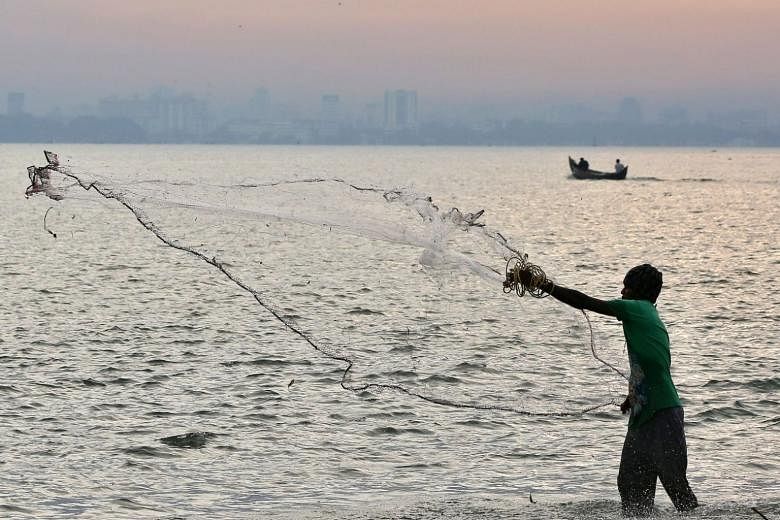ABU DHABI • In the waters of the Arabian Sea, a vast "dead zone" the size of Scotland is expanding, and scientists say climate change may be to blame.
In his lab in Abu Dhabi, Dr Zouhair Lachkar is labouring over a colourful computer model of the Gulf of Oman, showing changing temperatures, sea levels and oxygen concentrations.
His models and new research unveiled earlier this year show a worrying trend.
Dead zones are areas of the sea where the lack of oxygen makes it difficult for fish to survive, and the one in the Arabian Sea is "the most intense in the world", said Dr Lachkar, a senior scientist at New York University Abu Dhabi in the capital of the United Arab Emirates.
"It starts at about 100m and goes down to 1,500m, so almost the whole water column is completely depleted of oxygen," he said.
Dead zones are naturally occurring phenomena around the world, but this one appears to have mushroomed since it was last surveyed in the 1990s.
Dr Lachkar and other researchers are worried that global warming is causing the zone to expand, raising concerns for local ecosystems and industries including fishing and tourism.
The discovery was made possible by the use of robotic divers, or "sea gliders", deployed in areas researchers cannot access - an undertaking by Britain's University of East Anglia in collaboration with Oman's Sultan Qaboos University.
The findings of the 2015-2016 study were released in April and showed the Arabian Sea dead zone had worsened in size and scope.
And unlike in the 1996 measurements, when the lowest levels were limited to the heart of the dead zone - midway between Yemen and India - now the dead zone extends across the sea.
Dr Lachkar explained that the Arabian Sea dead zone appears to be stuck in a cycle where warming seas are depleting the oxygen supply, which in turn is reinforcing the warming. This, he said, "can be very scary for climate".
Ports from Mumbai to Muscat look out onto the Arabian Sea, making it a critical body of water. These coastal hubs and the populations beyond them will be affected by further expansion of the dead zone.
Fish, a key source of sustenance in the region, may find their habitats compressed from deep underwater to just beneath the surface, putting them at risk of overfishing and extreme competition.
"When oxygen concentration drops below certain levels, fish cannot survive and you have massive death," said Dr Lachkar.
"Fishing is an important source of revenue and it's directly impacted by the oxygen," he said. Even coral reefs and, by extension, tourism could be affected.
The issue was at the top of the global agenda in 2015, when the world hammered out a deal in Paris to cut carbon emissions.
But the landmark agreement received a blow last year, when United States President Donald Trump announced he would be pulling the country out of the accord.
AGENCE FRANCE-PRESSE

